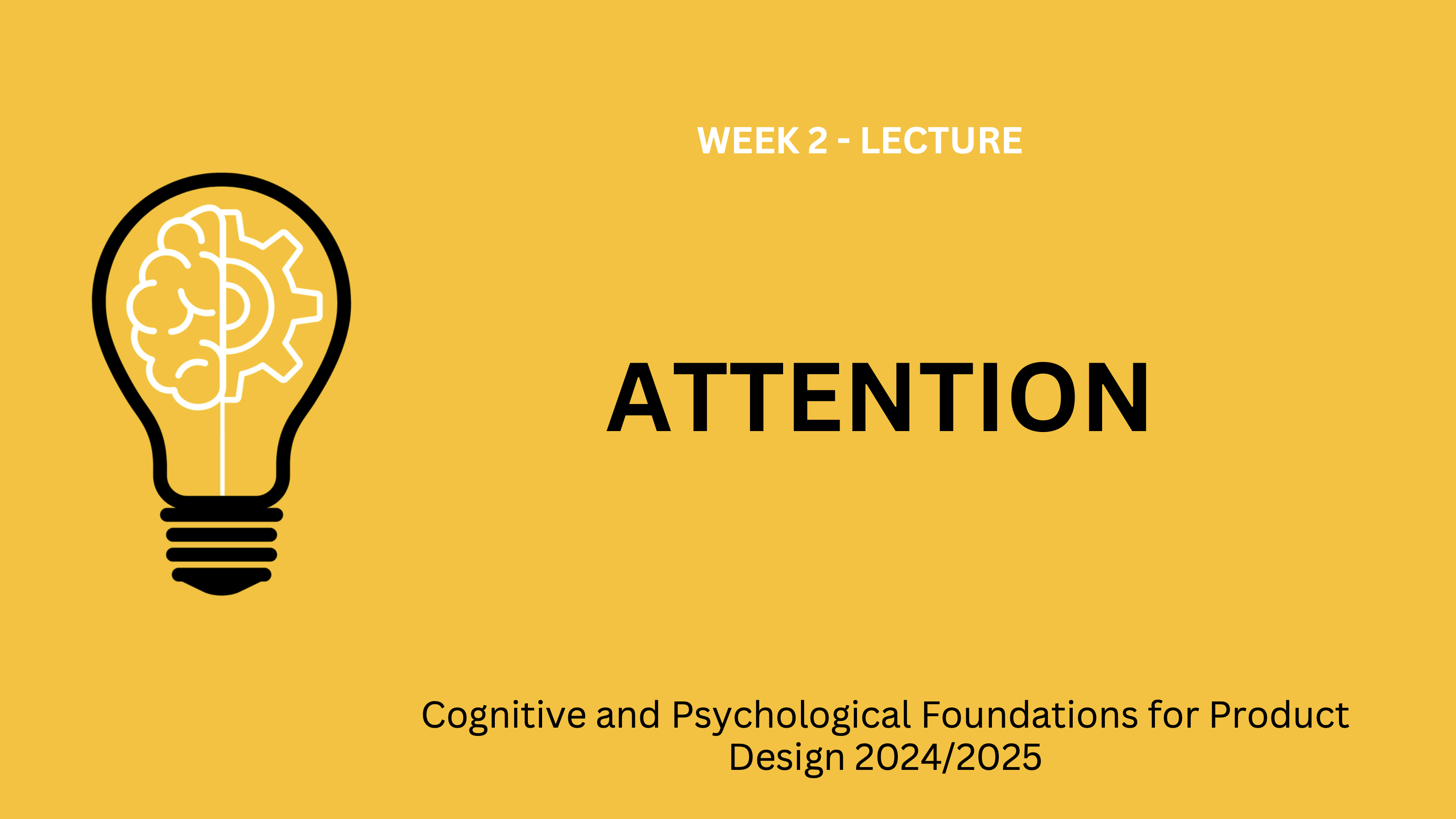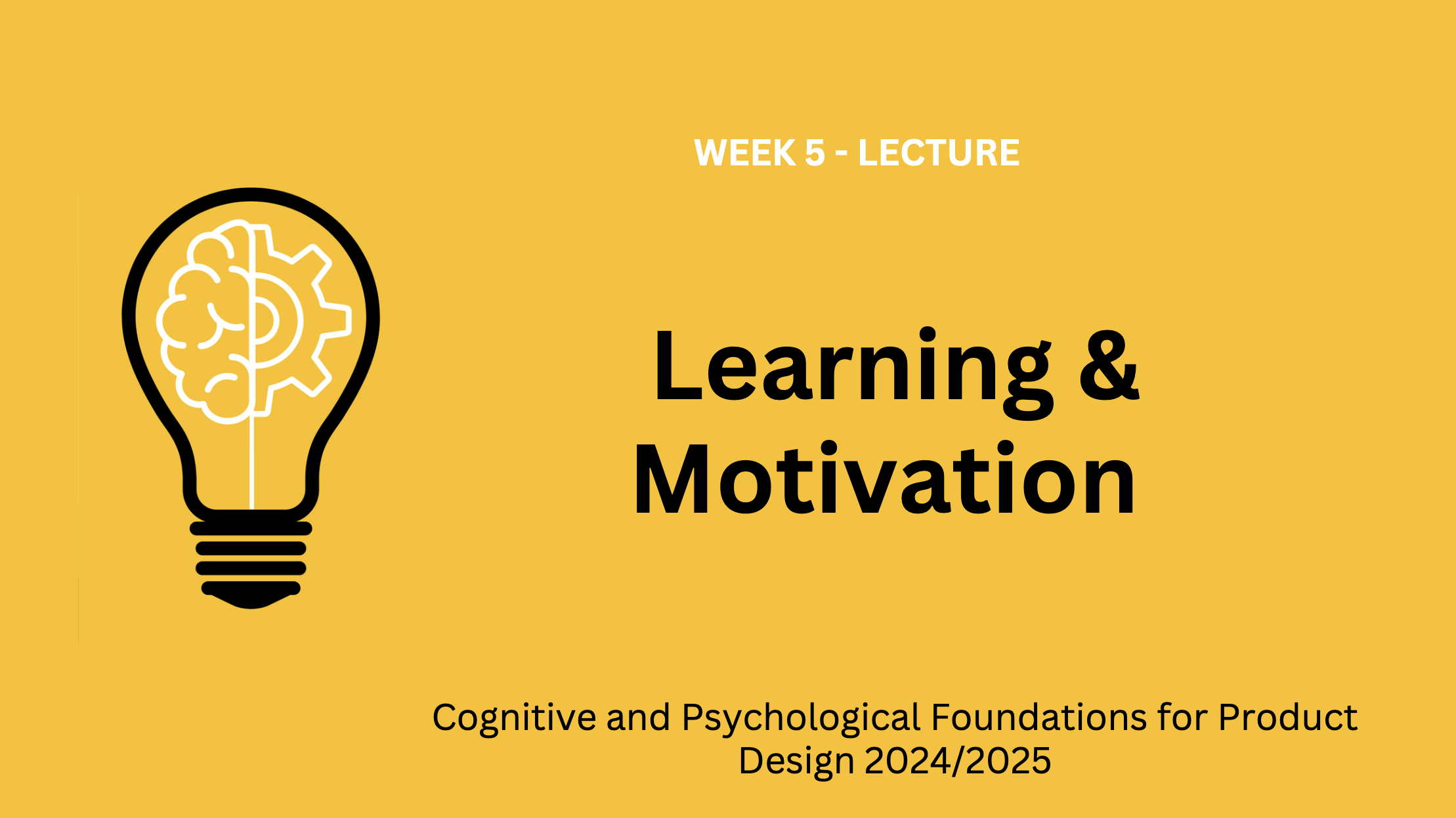Course Slides & Materials
Slides from my course on Cognitive and Psychological Foundations for Product Design. Feel free to view online or download for teaching and study.
This lecture series is part of the Integrated Product Design Master’s program at TU Delft Industrial Design Engineering Faculty. It provides students with a research-informed understanding of how human cognition, perception, learning, and motivation influence the way people interact with products and services. The aim is to equip future designers with the theoretical and practical knowledge to create products that are not only functional and aesthetically pleasing but also cognitively accessible and psychologically engaging.

This lecture focuses on the concept of attention, its types, and its significance in processing information. It shows how attention helps us filter relevant information from the vast sensory input we receive. Key areas of discussion will include different types of attention, such as selective and divided attention, and how attention can be both attracted and directed. It discusses how to examine phenomena like change blindness and multitasking, and explains various methods for measuring attention. Understanding these concepts is crucial for designing effective and user-friendly products.

This lecture explores the fundamental concepts of learning and motivation in the context of product and system design. It discusses how users acquire knowledge and skills, the role of conditioning and gamification in shaping behavior, and the importance of motivation in the learning process. Additionally, it delves into the relationship between memory and learning, examining how these elements influence user interaction with products.
License & Disclaimer
Copyright: © 2025 Christina Schneegass. Unless otherwise noted, these materials are licensed under CC BY‑NC 4.0 (Attribution–NonCommercial). You may remix, adapt, and build upon the material for non‑commercial purposes, provided you credit the author.
Disclaimer: These materials are provided for educational purposes. While care has been taken to ensure accuracy, they may not reflect the most up‑to‑date research or industry practices. Always verify critical information before applying it.
Third‑party content: Images or figures credited to other authors remain under their respective licenses and are used with permission or under fair use. Please retain any attributions when reusing the slides.